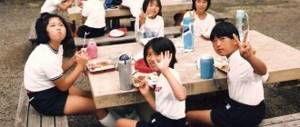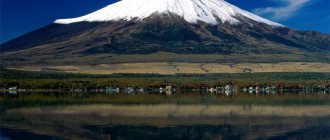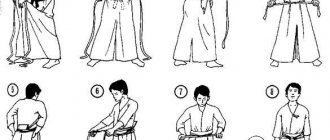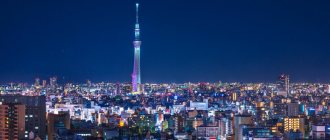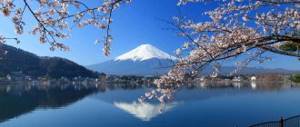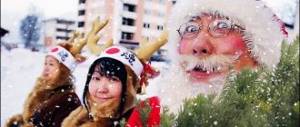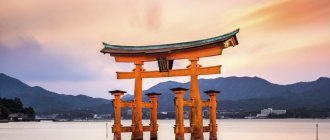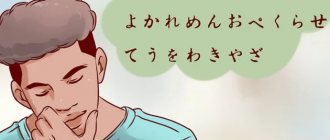In Japan, New Year is the most important holiday per year. Celebrating the Japanese New Year (O-shogatsu (お正月)) means spending time with family and loved ones, eating lots of delicious food and praying for good luck in the coming year. During the New Year holidays, Japanese families get together and take part in several different traditional and cultural activities .
From December 29 to January 3, most people in Japan have New Year's weekend, making it an ideal time for family gatherings. During the New Year, it is also customary to do a major annual cleaning (お掃除, o-soji) to cleanse the living space for a comfortable life in the coming year. This is also the time to give gifts.
Nengajō 年賀状
Sending New Year greetings to friends and family is an important part of celebrating the coming year. Just like in the West, sending Christmas cards and receiving them on January 1st is very common in Japan. Often, nengajo, or greeting cards, feature the Chinese zodiac sign of the New Year, and the card itself offers a chance to win prizes in the Japan Post Nationwide Lottery.
Cities and resorts
New Year's holidays in Japan are a mixture of ancient traditions and modern culture.
In Tokyo you can visit temples, fairs, and fun parties. Children will be delighted with the capital's Disneyland, where entertainment and festive programs await them.
There is an ice village in the city of Tomamu near Lake Shikaribetsu. Tourists will be delighted by the houses made of ice and snow. They will be able to visit the ice chapel and sample local treats and cocktails at the ice bar.
Onsen hot springs are located at the foot of Mount Fuji. Vacationers will be able to enjoy the modern, comfortable infrastructure of the resort and the picturesque scenery of snow-capped mountains and volcanoes. Swimming in natural mineral water baths (ofuro) and visiting water parks will help improve your health and recharge your energy until your next vacation.
New Year's treats
Osechi ryori
At the end of the year and the first days of the new year, Japanese people eat traditional dishes called Osechi ryori (おせち料理). They are usually served in a bento box (重箱, jubako). Each dish and ingredient represents a different New Year's wish.
Traditionally, the first 3 days of the New Year were considered sacred, and no cooking or use of the fireplace was allowed during this time. Osechi is usually made in advance so that it lasts for several days. Traditional New Year's dishes are usually ordered in restaurants or purchased in department stores.
Toshikoshi-soba
On New Year's Eve (大晦日, omisoka), it is customary to eat soba noodles (年越し, toshikoshi). These thin and long buckwheat noodles are served in hot broth. She represents a long and healthy life . Toshikoshi-soba can be found everywhere, even in konbinis. There are many recipes and additives used, and most families have their own signature ones.
Mochi
Sticky rice cake (餅, mochi) is another special holiday food. During the New Year holidays, it is customary to make mochi by hand. However, it can also be purchased ready-made. New Year's mochi is made into a decoration called kagami mochi (鏡餅), which consists of two large round mochi cakes with a Japanese citrus fruit (daidai) on top. Nowadays, daidai is usually replaced by mikan (Mandarin), which is more common.
How to celebrate New Year in Japan: 8 interesting facts
© Provided by: Psychologies.Ru New Year in Japan: 8 facts
New Year or Oshogatsu is one of the most important holidays for the Japanese. At this time, even inveterate workaholics (and they are the majority in Japan) leave all their work to reunite with their family and pay tribute to the New Year’s customs that have been established here for years.
The official New Year holidays in Japan begin on December 28 and last until January 4. If you are lucky enough to come to Tokyo during this time, you will probably be disappointed. On holidays, the life of the metropolis comes to a standstill.
Many people are leaving for their hometowns, and even shops are not open. What can we say about restaurants and entertainment venues, traditional companions of the modern New Year’s culture of many Europeans.
New Year new life
New Year's Eve is called omisoka in Japanese. This is the time of big cleaning - soboji, in which the whole family takes part. Getting rid of the old to make room for the new is very Japanese.
Old grievances, damaged or unused things, even old photographs, which a Russian would never dare throw away, are all taken out of the house at this time. Some items are saved for special New Year's sales. It seems like he cleared the place and earned money - the practicality of the Japanese is evident in everything.
Instead of a holiday tree
Lush spruces and fluffy firs, decorated with balloons and lots of holiday lights, are a European tradition. In Japan, the familiar symbols of the New Year are replaced by kadomatsu - decorations made of pine, bamboo and plum, symbolizing longevity, prosperity and strength.
They are placed in front of the doors of houses and in office buildings a few days before the New Year and removed immediately after January 7th. It is believed that Kadomatsu is the temporary home of the deity Toshigami-sama. By inviting him, families provide themselves with a generous harvest for the whole year and the blessing of their ancestors.
To the New Year's table
On New Year's holidays, the Japanese cannot be found at the stove. Firstly, they honor the tradition that it is forbidden to use fire for cooking during the first three days of January. Secondly, all stores are closed. Therefore, dishes for the New Year's table and for several days ahead are prepared in advance.
Not a single farewell to the old year goes by without toshikoshi-soba, an unsightly looking noodle. On the Japanese New Year's table, it is a symbol of longevity and an easy life. And the Japanese also believe that by eating this not the most appetizing dish, they get rid of all the failures of the old year.
And on the New Year's table, the dominant place is occupied by osechi-reri. This is a set of seafood and vegetables that are eaten at the very beginning of the New Year. Osechi-reri is served in a beautiful jubacao box, which is placed in the center of the table.
And this is not just a dish, but a set of wishes. Each ingredient in osechi reri has a meaning that any Japanese can decipher.
For example, renkon lotus root promises a happy year without obstacles. Kuromame black beans are served if you want stability at work. Japanese lakedra - for career advancement. Herring caviar is eaten by those who dream of a large family. Shrimp will appeal to those who want to live a long and happy life. And the bright yellow color of kuri kinton, a mix of candied chestnuts and mashed potatoes, symbolizes wealth.
Osechi-reri is eaten with special ivan-bashi chopsticks, sharp at both ends. It is believed that the second side is used by a deity who will guide you throughout the year.
© Provided by: Psychologies.Ru New Year in Japan: 8 facts
When the clock strikes twelve
While in Russia the chimes sound during the first minute of the new year, in Japan the bells do not stop ringing for two hours. This is one of the most important rituals for Buddhist temples throughout Japan, called joya no kane. The beginning of the new year is marked by 108 bells. And not by chance.
In Buddhism, human beings are believed to suffer from 108 types of earthly desires and feelings called Bonno. These include anger, attachment and envy. Each ring of the bell removes one alarming Bonno from you.
If translated literally, joya-no-kene means “the night when you can discard the old and move into the new.” It's the perfect time to leave your old self behind and start the new year with new resolutions and a clear head. It is believed that with the 108th stroke of the bell, nothing will disturb your mind.
Happy ganjitsu
The first day of the new year in Japan is called ganjitsu. And this is a very busy day for all Japanese families. After breakfast (osechi-reri) with all their relatives, the first thing the Japanese do is go to the temple. There everyone prays together for good luck in the new year.
This ritual is very interesting. Here's what to do: first throw a few coins into the box in front of the altar, then ring the bell using the rope hanging from it, bow twice, clap your hands twice in front of your chest, and finally bow again. Now luck will not turn away from you. And only then can you go shopping for gifts...
Cat in a poke
A favorite Japanese tradition is fukubukuro, special bags with random goods that are displayed in many stores. The price for them is fixed, but the contents are a surprise for the buyer.
You can find anything in your lucky bag. Often the cost of contents exceeds the price of fukubukuro by almost half. It is not surprising that there is a huge queue at the doors of the stores where they are sold several hours before opening.
Oji-san, where are the gifts?
An analogue of the American Santa Claus in Japan appeared relatively recently. Dressed in a red sheepskin coat, like his overseas brother, Oji-san brings gifts to the kids on the night of January 1st. However, if for some reason the New Year's wizard did not have time to stop by, Japanese children are not particularly upset. After all, the ancient tradition of otoshidama is revered to this day.
On New Year's Day, boys and girls receive small envelopes with money from their parents, grandparents and all their closest relatives. On average, they give 5,000 yen (about 3,500 rubles). So a substantial amount is collected from everyone. The child can dispose of it as he wants.
Strictly on schedule
In Japan, only postmen work on January 1st. They deliver nengajō, a special type of postcard that Japanese people send to their friends and acquaintances to welcome the new year. This custom is very similar to the Western tradition of sending Christmas cards.
The only difference is that in addition to warm words and wishes, the recipient receives a unique lottery number, which is on all nengadze postcards. The lucky ones will receive various gifts - from travel tickets to useful gadgets.
about the author
Julia Angel
- President of an international corporation and founder of the clinic.
Share your opinion with us
↓ expand ↓
Hatsumode 初詣
On January 1, 2 or 3, it is customary to make the first visit to the temple of the year . This is a Shinto tradition, but many people visit Buddhist temples instead, where many Japanese go at midnight to celebrate the beginning of the year. At exactly twelve o'clock the large temple bell rings 108 times. The most popular temples typically attract around 1 million visitors during the early days of the New Year.
New Year's prayers are performed at the shrine, and last year's talismans (お守り, omamori) are returned to the temple to be exchanged for new ones that bring happiness in the New Year. Hatsumode is a custom with roots in ancient Japanese culture that most temples participate in, and one of the most important New Year's traditions observed by most Japanese people.
The first sunrise of the year is called hatsuhinode, which literally means “first sunrise.” It represents renewal and hope in the New Year .
Many Japanese leave their homes to watch the first sunrise on a mountain, hill or beach and offer prayers. Seeing Hatsuhinode on Mount Fuji is considered a special blessing.
Present
On the eve of the New Year, the Japanese send greeting cards to close friends and relatives. Most often they take the form of postcards that are entered into a lottery. Each resident of the country receives about forty postcards and has the opportunity to win a holiday gift.
The Japanese present each other with amulets and souvenirs. Hamaimi look like arrows with white feathers and protect the house from evil spirits. Kumade ("Bear's Paw") is a bamboo rake that brings happiness to the owner. Takarabune is a talisman in the form of a boat with rice on which the seven gods of luck sit. Daruma is a wish-fulfillment doll. Its owner makes a wish and draws one pupil. When the wish comes true, he completes the second one. If by the end of the year the wish is not fulfilled, then the doll is burned.
It is customary to give money to children. They are placed in a potibukuro - a small bright envelope. The amount of money depends on the age of the child. If there are several children in a family, then it is customary to give them the same amount of money.
Fukubukuro 福袋
The start of the New Year means stores across Japan are offering "lucky bags" (fukubukuro). This tradition began as a way to get rid of leftover goods. But now, in many places, special foods are placed in fukubukuro. For a fixed price, you get a bag full of different things that can sometimes cost more than the fukubukuro itself. Bags can include discounts on clothing, jewelry, electronics, entertainment, coffee, candy and more.
Preparation, cleansing ritual
The Japanese pay great attention to cleanliness; on December 13, in accordance with ancient traditions, general cleaning is carried out , the home must be thoroughly cleaned so that the Shinto god Tosigami does not pass by, and good luck and prosperity are always in the house. The ritual is called susu harai , after which a kadomatsu .
Before December 31, it is customary to pay off debts, prepare a festive table, take furo, and dress beautifully. Children should wear kimonos in light colors, adults - dark ones. Children under twelve years old must celebrate the holiday in new clothes.
Christmas and KFC chicken
Among the Western holidays that have gained the most popularity in Japan is Catholic Christmas. This date is an analogue and harbinger of Valentine's Day, also borrowed in recent years.
What do the Japanese do at Christmas? Catholics go to mass, and the rest, mostly young couples, go to a festive show. For example, to the main concert hall of the country, Tokyo Dome. On Christmas night, local pop stars perform here, and tickets are sold out well in advance. And after the concert, in a French restaurant, the lovers exchange gifts and celebrate this holiday decorated with Christmas trees.
» ALSO READ ARTICLE - Restaurants and cafes in Japan: rules of conduct
By the way, it is difficult to find a seat in restaurants on a holiday evening, so we recommend booking a table in advance so as not to go hungry. However, KFC with chicken legs will always come to the rescue. For some, it may not be comme il faut - on such a holiday, eating fried chicken with your hands.
But this tradition has existed here since the 70s of the last century, and more than one generation of Japanese grew up eating Christmas chicken from Colonel Sanders, dressed in a Santa Claus costume. If there is no place in the restaurant on December 24, go to the nearest KFC for chicken. However, be prepared for the fact that there will also be a long line of Japanese thirsty for the Christmas delicacy.
Meeting Toshigami-sama
On December 31, Oomisoka Day, the Japanese make the final preparations for the meeting of the deity of the year, Toshigami-sama: on the threshold of a cleaned and washed to a shine house, they put up a Kadomatsu New Year's decoration made of bamboo and pine, special shimekazari amulets are hung on the door, and a kagamimochi - a pyramid - is placed on the home altar. mochi rice ball topped with orange tangerine. And so, the winter New Year's morning quietly arrives... The big cleaning is completed, the New Year's treat prepared in advance is waiting in the wings, the time has come to slowly enjoy communication with family and Toshigami-sama.
Left: Shimekazari amulet, center: Kadomatsu decoration, right: Kagami-mochi pyramid
Holiday attributes
Father Frost
Hoteyosho is traditionally considered Santa Claus . Everyone without exception, children and adults, asks him for happiness and good luck. Segatsu-san and Oji-san also appeared relatively recently . The first character does not give gifts (this is the responsibility of the parents). He is busy congratulating people in their apartments. Before his arrival, a low gate made of pine branches and bamboo is built in front of the house. Near the houses of wealthy Japanese there are dwarf pine, peach and plum trees.
Segatsu-san
Motibana
Mochibana is almost ikebana, only it is usually done on New Year’s Eve; home decoration is considered one of the most ancient Japanese traditions. The Japanese place bamboo or willow branches throughout their homes and hang figurines of plants, flowers, fish, and fruits on them. This ritual is associated with attracting the spirit of the holiday. If you manage to create the atmosphere necessary for it, then there will also be prosperity in the house throughout the next year.
Kadomatsu
In the Land of the Rising Sun, instead of a Christmas tree, they decorate a pine tree. To be more precise, it is a craft made from rice straw, bamboo, pine, decorated with ferns and tangerines. In coastal regions, kadomatsu is additionally decorated with seaweed and shrimp.
Festive table
The Japanese eat quite a bit of meat and in small portions. They do not give up their usual way of life even on holidays. The New Year's meal in Japan is replete with rice, vegetables, fish and seafood.
A resident of the post-Soviet space may even think that the food on the table is quite meager: the ingredients of traditional o-sechi are placed in 3 small boxes for each of the family members and guests, there is usually a plate of Mochi, the owners can offer a handful of rice vermicelli and a glass of sake - that’s all.
Interesting fact: rice vermicelli symbolizes the wish for longevity, but it is eaten only in the old year. Eating it after New Year's midnight means the imminent death of the prohibition violator.
O-set is a fairly ancient tradition. Nowadays, only elderly Japanese women master the art of compiling harmonious sets of ingredients. Young people prefer to buy ready-made ones in supermarkets or markets.
On New Year's morning, the family snacks on a small portion of Dzoni soup before heading to the temple. This is a dish with Mochi rice cakes and vegetables or fish. It must be sprinkled with fresh herbs.
With grocery stores closed for the holidays, for several days the Japanese eat from special boxes containing beautifully packaged food with a long shelf life.
The night of the second of January (the so-called “first dream”)
Returning to the prefix “Hatsu-” (first...) - this also applies to the “first dream”. “The first dream” (Hatsu-Yume 初夢) is very important because... Whatever you dream about that night, a year will pass. The ideal option would be if you dreamed of: Mount Fuji, a falcon or eggplants. Why is that? Don't know. Having “rummaged” through the Internet on ru.net (I didn’t really want to read into jp), I discovered several quite logical “theories”:
1 theory - it's all about relative height (and puns): Japan's highest mountain is Fuji, near which there is another mountain called Ashitaka, "-taka" meaning "falcon". This mountain is half lower than Fuji. Eggplants were included in the list of three auspicious items in ridicule - their prices in ancient Japan were exorbitant.
2 theory - Mount Fuji is the highest; falcon bird (hawk) – strong and smart; and then a play on words - “eggplant” (nasu / nasu or nasubi / nasubi) - “achieving greatness” (nasu / nasu).
Theory 3 - Shogun Tokugawa Ieyasu was very fond of Mount Fuji, falcons and early eggplants. The list of “lucky” objects seen in the first dream continues: Yon-Sen, Go-Tabako, Roku-Zatō (4. fan, 5. tobacco, 6. blind musician). The origins of the second “lucky” trio are little known. It is also unclear whether the original list was of six “happy” dreams, or whether one was replaced by another.
